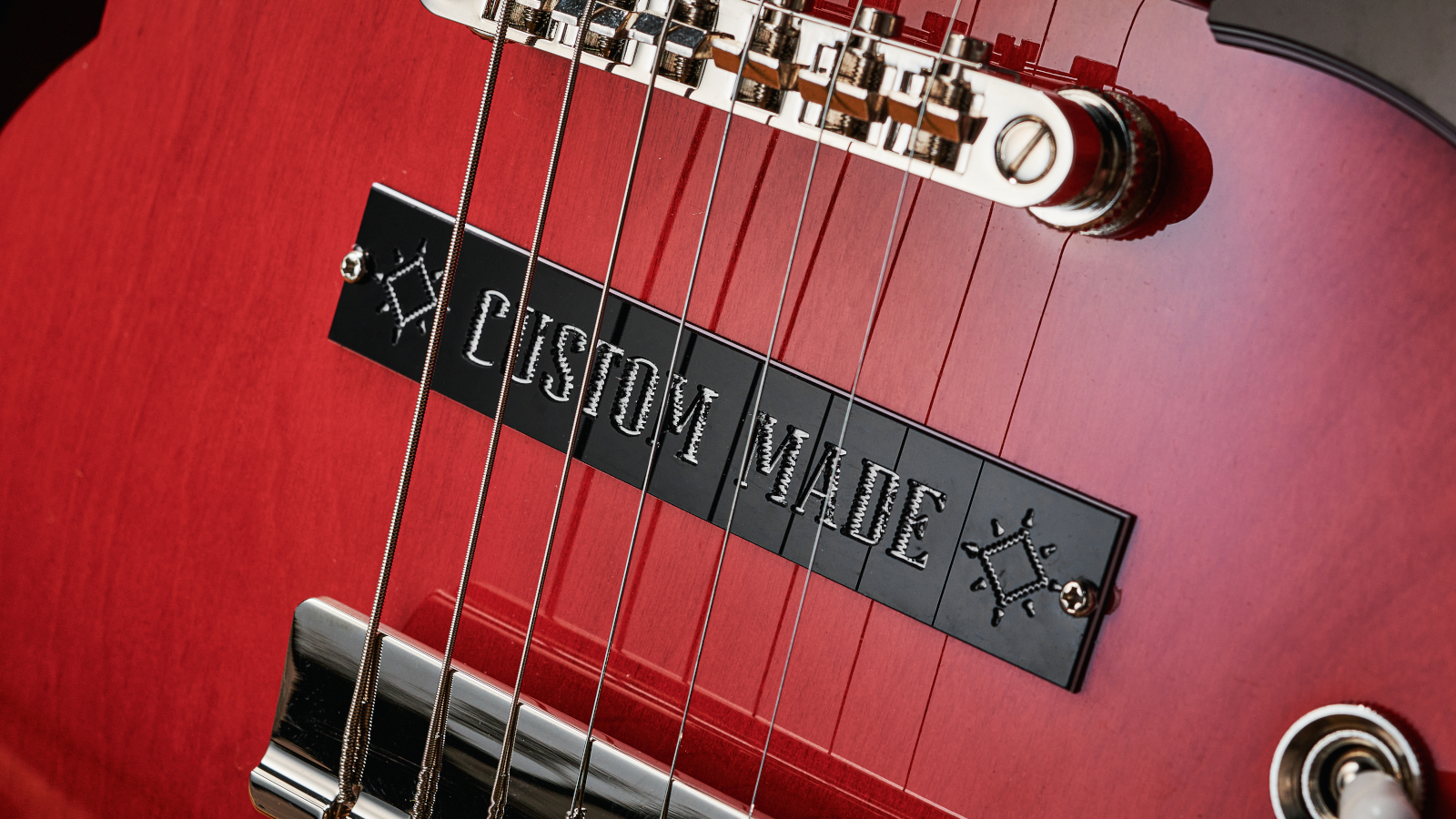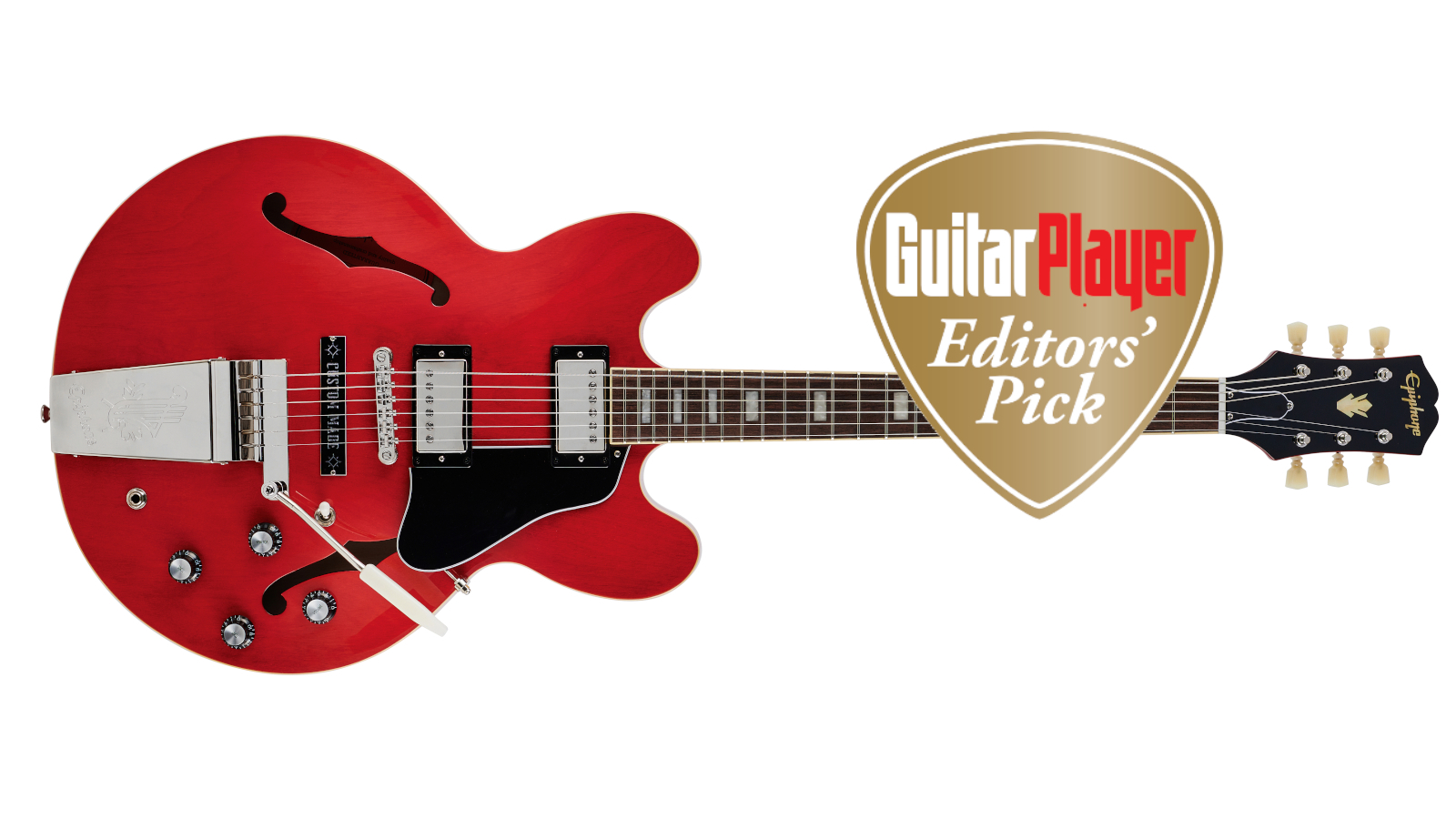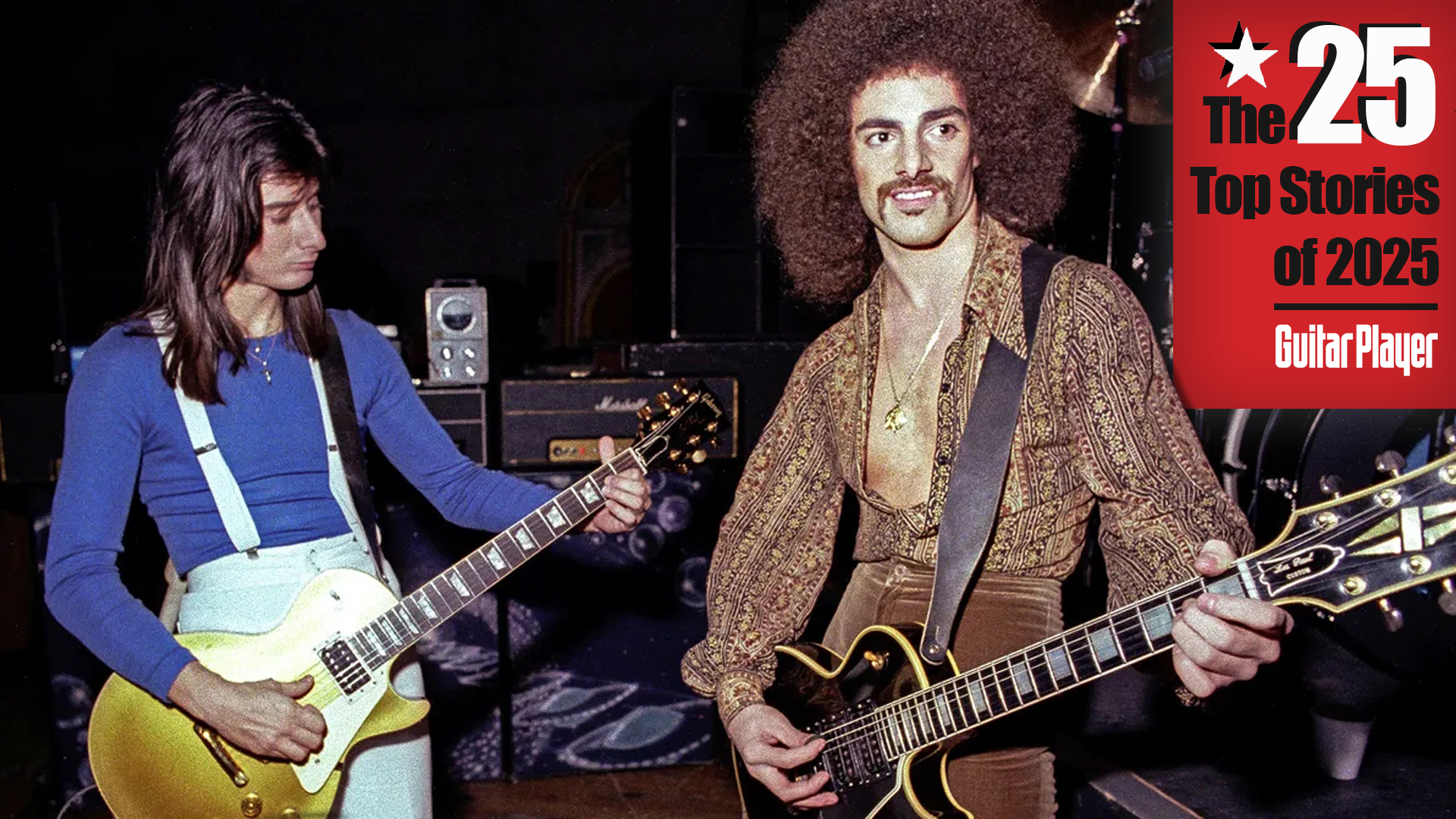GuitarPlayer Verdict
Achieves an impressive degree of classic 335 goodness at a very reasonable price for its level of quality
Pros
- +
A well-built and appealingly vintage-inspired guitar for the price, delivering classic and versatile ES-335 tones
Cons
- -
The vibrato functions well, but can induce tuning issues with heavy use
You can trust Guitar Player.
Few guitar gods have been as public about their favorite vintage guitars as Joe Bonamassa, and several of the stars in his collection have made for impressive reissues and tribute models to date.
In addition to JB’s name simply adding celebrity recognition to any new signature model he’s associated with, it also seems that the blues great’s collaboration helps to bring out the best in what might otherwise have been a run-of-the-mill, entry- to mid-level instrument.
The Epiphone Joe Bonamassa Limited Edition 1960 Les Paul of 2020 was a case in point, an impressively thoughtful take on a vintage ’Burst at a very reasonable price – and now the same maker’s new Joe Bonamassa 1962 ES-335 promises to attain the same success.

Despite the Epiphone name on the headstock, the Joe Bonamassa 1962 ES-335 is obviously based closely on the “block-neck” Gibson ES-335 of the early ’60s, and not just any ES-335 but a much-loved example that Bonamassa acquired early in his career.
Purchased in 1996 and used on his first solo album, A New Day Yesterday, this original vintage ’62 ES-335 was sold to finance a move to L.A. for the next phase of his career, and Bonamassa tells us he’s missed it ever since.
So much so, in fact, that he jumped at the chance to reacquire that very same guitar upon receiving an unexpected phone call some 20 years after he’d first parted with it.
Cue impassioned reunion, followed by Epiphone’s examination of the ’62 Gibson for its next big JB signature release.
All the latest guitar news, interviews, lessons, reviews, deals and more, direct to your inbox!
And the rest is history.

Given the premise, this guitar sticks closely to the traditional ES-335 shape and specs. Its body is made from five-ply laminated maple with a solid maple center block, the original genius stroke of the 1958 design that helped to cut feedback while adding heft, sustain and articulation to the tone.
The glued-in mahogany neck is carved to a comfortably rounded medium-C profile that measures about .84 inches in depth at the first fret, making it a little fuller than many early ’60s Gibson necks, but not as chunky as the ’59 profile.
The fingerboard is made from Indian Laurel, a medium-brown wood that approximates the look and feel of rosewood, and carries 22 well-dressed medium-jumbo frets.
This guitar sticks closely to the traditional ES-335 shape and specs
It’ll come as no surprise that Epiphone is offering the guitar only in a Sixties Cherry finish, to emulate the original, but it sure looks good on this one. Rich and succulent, with just translucence to reveal some of the wood grain beneath, it’s buffed to a high gloss and beautifully contrasted by the single-ply white binding on the top, front and around the fingerboard.
The black control knobs with silver inserts and five-ply black pickguard all do the appropriate vintage-correct tricks, and the “Custom Made” plaque covering the spot where the empty stopbar-tailpiece studs existed on vintage originals is a nice touch.

Hardware includes a traditional Tune-o-matic bridge set into studs and bushings, partnered with Epiphone’s rendition of the Maestro Vibrola tailpiece, a simple but effective bent-spring vibrato unit adept at subtle, Bigsby-like wiggles.
Up at the other end, in addition to the Epi approximations of Kluson Deluxe tuners with double-ring tulip buttons, it’s nice to see the use of the more Gibson-like “open-book” headstock shape that has adorned many models in recent years. Not that there’s anything wrong with the more narrow-waisted Epiphone outline of old, but any good effort at an authentic reissue-style guitar like this deserves the right lines from top to bottom.
Epiphone has loaded a pair of parent-company Gibson’s popular Burstbucker PAF-style pickups
In the electronics department, Epiphone has loaded a pair of parent-company Gibson’s popular Burstbucker PAF-style pickups: a 2 in the neck position and a slightly hotter 3 in the bridge.
These are routed through the traditional four-knob control section with a three-way toggle selector, a user interface that’s proved versatile since the mid 20th century.
In the hand, the Joe Bonamassa 1962 ES-335 further confirms my impression that Epiphone continues to step up its game. The workmanship inspires confidence from frets to finish, appearance to playing feel, and the guitar is lively and resonant when played acoustically.

Tested through a Fender Princeton 1x10 combo and a Vox-meets-Marshall-flavored 65amps London head and 2x12 cab, it revealed no surprises whatsoever – unless you somehow weren’t expecting a classic, versatile, and very expressive semi-hollow performance.
Like other guitars in the ES family, the core of the JB 1962 ES-335’s personality lies in its combination of thin maple-ply top, back and sides and solid center block (not to mention the influence of the scale, hardware and pickup complement).
The build and ingredients lend a certain hair and bite even to ultra-clean tones, which remain just a touch raspy, gritty and thick, where a solidbody with the same features might sound more neutral.
The ES-335 has long been a chameleon in the stable of seminal electric guitar designs, and the Epiphone Joe Bonamassa 1962 ES-335 is no different
The ES-335 has long been a chameleon in the stable of seminal electric guitar designs, and the Epiphone Joe Bonamassa 1962 ES-335 is no different. Like other good examples of the breed, it runs from crisp, articulate, edge-of-breakup blues to full-on rock crunch, and wails like a champ of a Les Paul substitute, all without breaking stride.
Yet with the amp dialed in right, it can also shimmer, twang and jangle in ways that leave jaws on the floor for players who just didn’t think that a dual-humbucker, Gibson-style guitar could sound like that.
The Maestro-style vibrato works well for subtle tremulations, although heavy use inevitably behooves some re-tuning between songs, but so it goes with these units, and you can always just ignore it.
All in all, the Epiphone Joe Bonamassa 1962 ES-335 achieves an impressive degree of classic 335 goodness at a very reasonable price for its level of quality, and that earns it an Editors’ Pick Award.
Specifications
- NUT: Graph Tech, 1 11/16” wide
- NECK: Mahogany
- FRETBOARD: Indian Laurel, 12” radius, 24.75” scale length
- FRETS: 22 medium-jumbo
- TUNERS: Vintage-style Epiphone Deluxe with double-ring tulip buttons
- BODY: Semi-hollow, made from five-ply laminated maple with maple center block
- BRIDGE: Epiphone Tune-o-matic bridge with Maestro Vibrola tailpiece
- PICKUPS: Gibson Burstbucker 2 and 3 in the neck and bridge, respectively
- CONTROLS: Individual volume and tone for each pickup, three-way switch
- FACTORY STRINGS: Epiphone .010–.046
- WEIGHT: 8.1 lbs
- BUILT: China
Visit Epiphone for more information.
Dave Hunter is a writer and consulting editor for Guitar Player magazine. His prolific output as author includes Fender 75 Years, The Guitar Amp Handbook, The British Amp Invasion, Ultimate Star Guitars, Guitar Effects Pedals, The Guitar Pickup Handbook, The Fender Telecaster and several other titles. Hunter is a former editor of The Guitar Magazine (UK), and a contributor to Vintage Guitar, Premier Guitar, The Connoisseur and other publications. A contributing essayist to the United States Library of Congress National Recording Preservation Board’s Permanent Archive, he lives in Kittery, ME, with his wife and their two children and fronts the bands A Different Engine and The Stereo Field.



